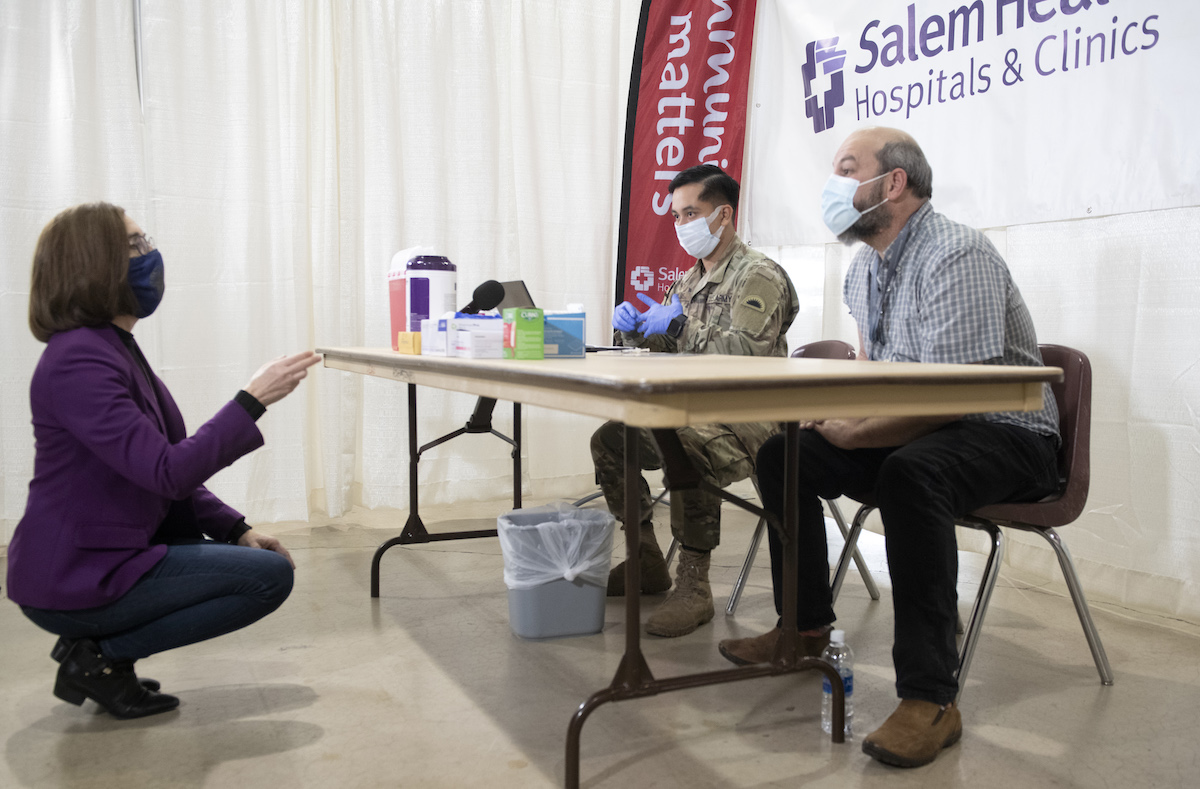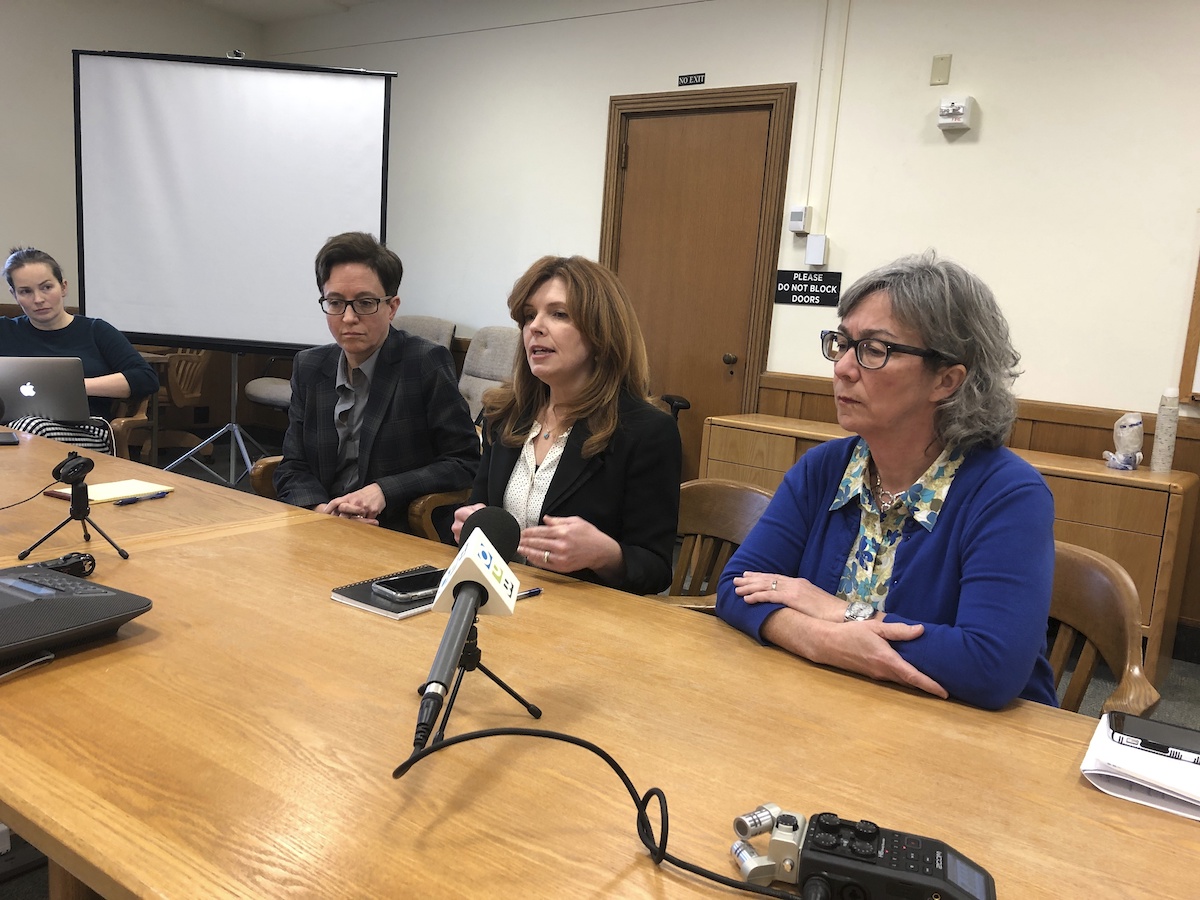The Oregon Health Authority (OHA) on Friday reported 5,729 new daily cases of COVID-19 throughout the week of April 19–27. That signifies a 21% rise from the preceding week, which marks the fifth uninterrupted week of 20% or higher surges in daily cases, according to the OHA.
Governor Kate Brown gave a press conference the morning of Friday, April 30, her first since extending the emergency order in Oregon through June 28 and the most recent “extreme risk” restrictions.
“I was presented with data with two paths Oregon could take,” Brown stated during the briefing on Friday. “As your governor, I chose to save lives.”
According to a report from OPB, “Restaurants, gyms, places of worship and other venues returned to these more limiting pandemic rules Friday in the 15 counties that were moved into Oregon’s extreme risk phase.”
Restrictions are instituted until at least May 6, depending on infection and hospitalization rates. This means a cessation of indoor dining in restaurants, reducing capacity at places such as gyms, pools and most recreational centers.
If weather permits, anyone wishing to exercise or socialize can do so outside, if social distancing and other government-issued safety precautions are followed.
Brown said that the decision was informed by a growing percentage of young Oregon residents with no underlying health problems contracting very serious cases of the virus, as well as a near doubling of hospitalizations for patients with COVID-19.
Possible explanations for the current trends are the spread of more severe and deadly mutations spreading rapidly through Oregon, and the fact that most residents have yet to be fully vaccinated.
Most states in the United States are seeing downward trends in infection rates, leaving some asking why Oregon has seen such a dramatic recent uptick in infections.
Some experts have posited the increasingly warmer weather could be a factor in the increased spread. As the weather warms, more and more people may wish to go outside.
One of the most alarming possibilities for the dramatic increase in cases is the presence of dangerous new variants of the virus. Unlike the East Coast and parts of the southern and midwestern U.S., the West Coast did not initially have to fear hyper-virulent strains of mutated COVID-19, such as the “U.K Variant,” more properly known by its scientific abbreviation, B.1.1.7.
The U.K. strain is now the “principal variant of concern” in the entire state of Oregon, according to Brett Tyler, the director of Oregon State University’s Center for Genome Research and lead researcher for OSU’s “TRACE” project.
In a recent report from OPB, Tyler stated, “The fraction in the sequence cases in Oregon reported are going up very sharply for B.1.1.7. It went up from 10% to 60% from March 14 through April.”
The Centers for Disease Control and Prevention (CDC) issued a study last Wednesday, which found the “Pfizer-BioNTech or Moderna COVID-19 vaccines [were] 94% effective against COVID-19 hospitalization among fully vaccinated adults and 64% effective among partially vaccinated adults aged [greater than or equal to] 65 years.”
Moreover, the B.1.1.7 variant, the dominant strain in Oregon, does not appear to impact the effectiveness of the vaccines. However, other variants, like B.1.351 or the “South African” variant, and P1, the variant first discovered in Brazil, seem to be less affected by the vaccination process.
Those variants are far less common, accounting for an estimated 5% of total cases in Oregon, though given their extremely virulent nature, the scientific community and public health organizations are watching their development with great care.
The combination of factors which have resulted in the rapid increase in infections thus has led to the most recent lockdown.
Not everyone is entirely convinced the lockdown is necessary, especially Oregon State Senate Republicans. Last Wednesday they indicated their intent to procedurally compel all bills to be read, in full, before ultimate passage. This move is in protest of Brown’s declaration on April 27 which stipulates 15 counties would be subject to new limitations, in order to stem the spread of COVID-19.
In a letter to extreme risk counties, Brown noted the lockdown is a temporary measure “to save lives,” and that a $20 million dollar emergency fund is available to small businesses.






